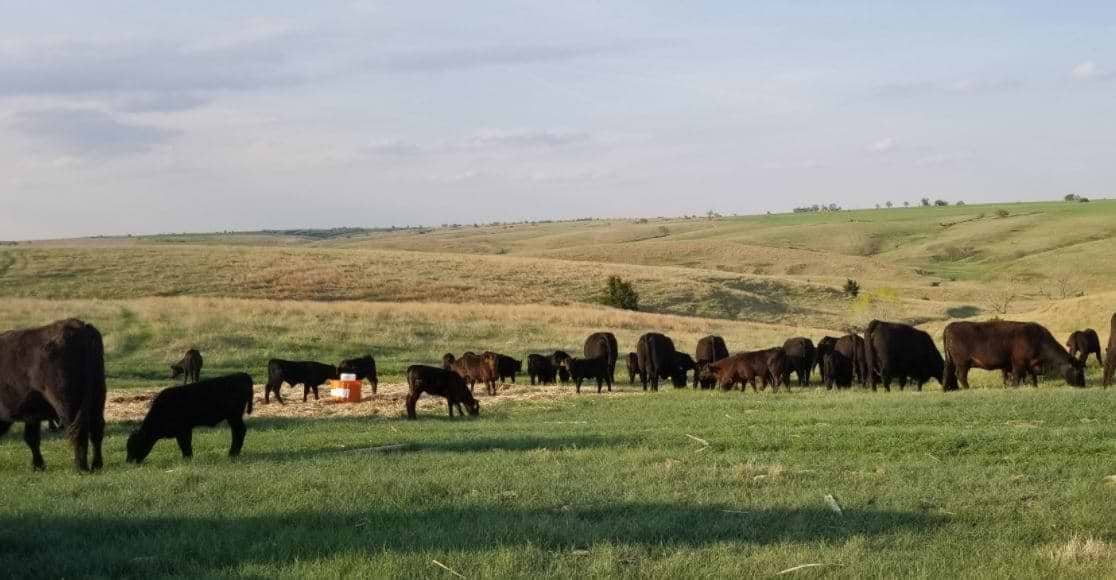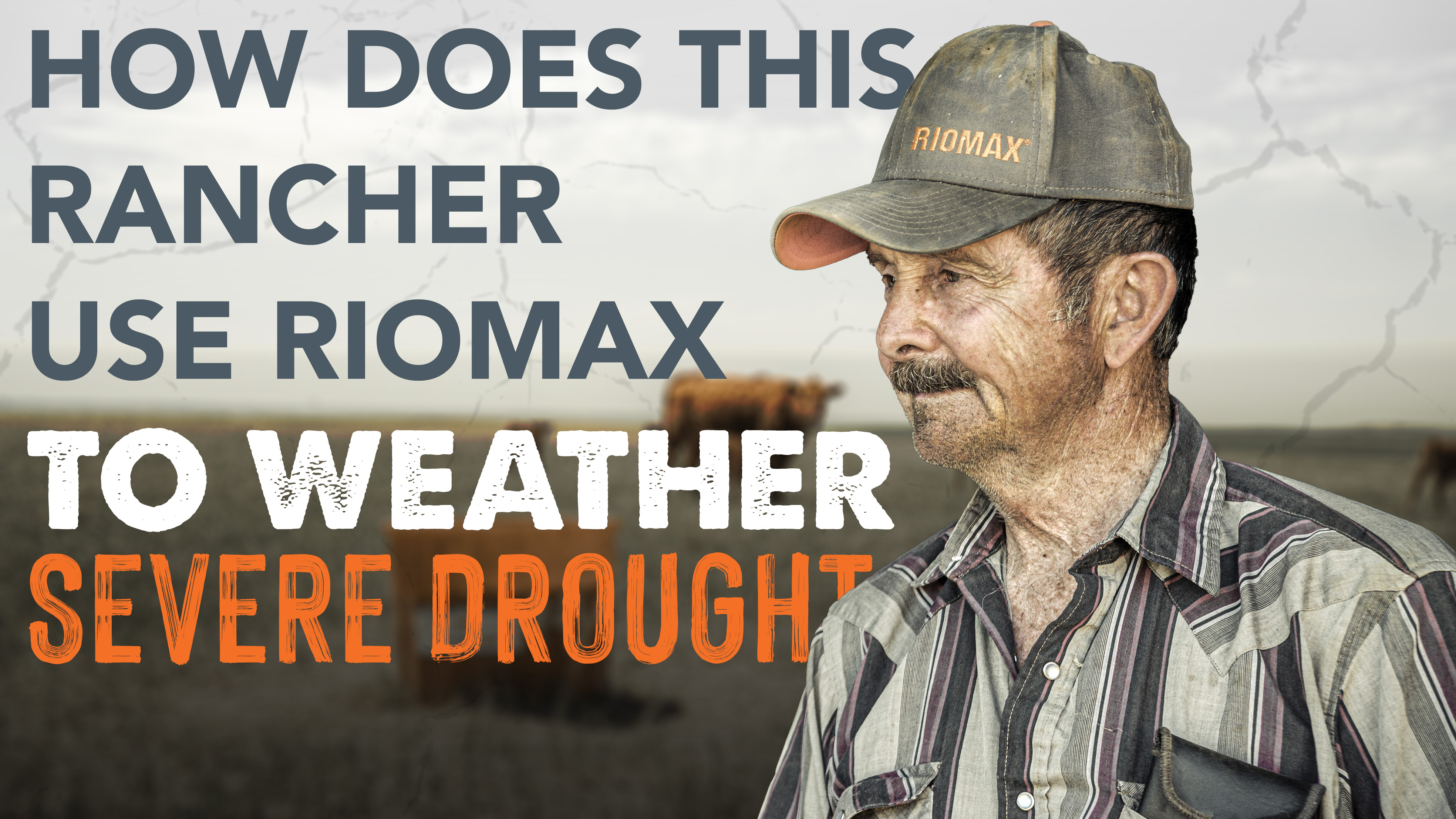Last updated on October 5th, 2023 at 10:30 am
Ranching is tough. Here’s how to smooth the rough edges a little.
Tough times are simply a part of ranching. So are good times. But when tough times roll around—drought, low cattle prices, high feed prices, you name it—there are places to save and places to spend.
Mineral supplementation is one of the inputs where strategic spending can pay off. Here are 7 reasons why:
1. Better Utilize Your Pastures
Regardless of whether you’re in the middle of tough times or things are good, fully utilizing your forage resources is important. But let’s face it—cattle will graze the preferred plants first and leave the less desirable alone.
Mineral tubs, because of the molasses that holds everything together, are very attractive to cattle. Move the tubs around your pastures and the cattle will follow.
An Idaho rancher, using this strategy, says, “My cows are grazing grasses that they don’t typically go after at all. In fact, they’re grazing star thistle, taking big mouthfuls of it.”

When cows learn to graze less desirable plants, it’s doing several things, says Daryl Paskewitz, a cow-calf producer and research and development manager with Rio Nutrition. First, it’s providing cheap gut fill. And when grazed early in the growing season, weeds and forbs are a great protein source.
Then it helps suppress the less desirable plants in your pastures, giving the more desirable species a better chance to proliferate.
2. Cut Hay Costs
Alec Oliver, a fifth-generation cow-calf producer near Seneca, Oregon, has been using mineral tubs for part of his herd for nearly 10 years. In 2020, when they gathered off the forest, they put everything on the mineral tubs in late September and left the tubs out all winter.
“It gives those cows quite a bit of extra in the fall when they can be on some pretty low-quality feed and still maintain through the winter,” he says. “We held back 5 to 7 pounds of hay per head per day all winter long.”
The cows went into winter a little under-conditioned. “We still fed less hay and those cows never acted hungry, never were upset, and steadily put on condition.” The 2021 calving saw the cows at a body condition score of 5 and 6. “Just perfect, I’d say, with less hay and less feed input.”
Read more about Oliver's cow/calf and yearling operation HERE.
3. Continuous Mineral Availability
“With loose mineral, you’re running out of product because you don’t want to put out several tons at a time,” Paskewitz says. “You want to put out small quantities so it doesn’t blow away, doesn’t get rained on, all those things that cost money.”
The next time a rancher checks the pasture, the cattle are out of mineral. “And how long they’ve been out, nobody knows,” he says. “And that’s one reason we have better results with tubs is because it’s easier to keep a continuous supply in front of the cattle just because of the delivery vehicle.”

4. Greater Mineral Bioavailability
Check the ingredients. Inorganic minerals are at the bottom of the list for bioavailability. Chelates are about twice as available to the animal. But inorganic minerals cost less.
Does the lower cost overcome the poor bioavailability and potential weather effects? Probably not, says Dr. Jeffrey Hall, professor of toxicology, veterinary diagnostics, and mineral nutrition at Utah State University. He tells of a rancher he worked with who was experiencing unexplained death loss in his calves on summer pasture.
The cattle were on an inorganic mineral and simply weren’t getting the mineral nutrition they needed. The rancher switched to tubs with a chelated mineral complex and his death loss went away.
Later, his sons took over the ranch and decided the tubs were too expensive. So they switched back to an inexpensive, inorganic loose mineral. And their death loss woes returned. Hall got them back on the tubs and the death loss went to zero, again.
5. Cattle Mineral Tubs Have Greater Weather Resistance
Speaking of the weather, that’s where tubs can help cut input costs. “The mineral doesn’t blow away in the wind,” Paskewitz says.
And it doesn’t care if it gets rained on because the molasses doesn’t dissolve when it gets wet. Some of the inorganic compounds in loose mineral, copper sulfate being the worst, have very weak chemical bonds. When it gets wet, the copper and the sulfate break apart, giving the mineral a metallic taste which reduces palatability.
What’s more, the free copper can bind with one of its many antagonists, making it unavailable to the animal.
So while an inorganic mineral supplement may cost less upfront, it doesn’t take too many dead or underperforming calves to make up the difference. Add to that the weatherproof aspect of the tubs, and for more and more ranchers, tubs have become the preferred way to provide mineral supplementation to their cattle.
Weather-resistant loose mineral is available, but the technology used to make it resistant to rain and snow may reduce its bioavailability. That’s because the rumen contains lots of water and the very thing that makes loose mineral resistant to precipitation may reduce how well the animal can utilize it.
6. Better Health & Calf Vigor
For Oliver, calving season begins in March and is 90% over in 45 days. It started cold in 2021. “We were below zero every morning,” he says. It was one of those stories your grandpa tells—2 feet of snow on the ground and 10 below.
“We lost one or two calves to cold weather and otherwise, these calves have enough life in them that when they hit the ground, they’ll get up get up and go,” he says. “And I think part of that has to do with being on a good mineral program. Before we were on it, we’d have a few more sick calves. So as far as the Rio, I think it helped us out.”

7. Improved Breed-Up & Fetal Programming
Beyond calving, Oliver says his mineral program paid off in the breed-up of his first-calf heifers. After the fall gather, preg-checking time showed the heifers with a 99% breed-up. That’s on large pastures with bulls.
He says that set of heifers had Riomax® in their system from the third trimester when they were in the womb and were born to cows that had been on the mineral for several years. “So I think that might be a little bit of a testament to some of that fetal programming and how it’s going to help those animals out,” he says.




